How to Stop Your Dog From Jumping on People
Not all people are receptive to a dog showering them with attention by jumping on them. Here’s how to encourage your dog to curb this instinct, without losing their playful spirit.
Not all people are receptive to a dog showering them with attention by jumping on them. Here’s how to encourage your dog to curb this instinct, without losing their playful spirit.
by Vivian Zottola, MSc, CBCC, | March 19, 2024
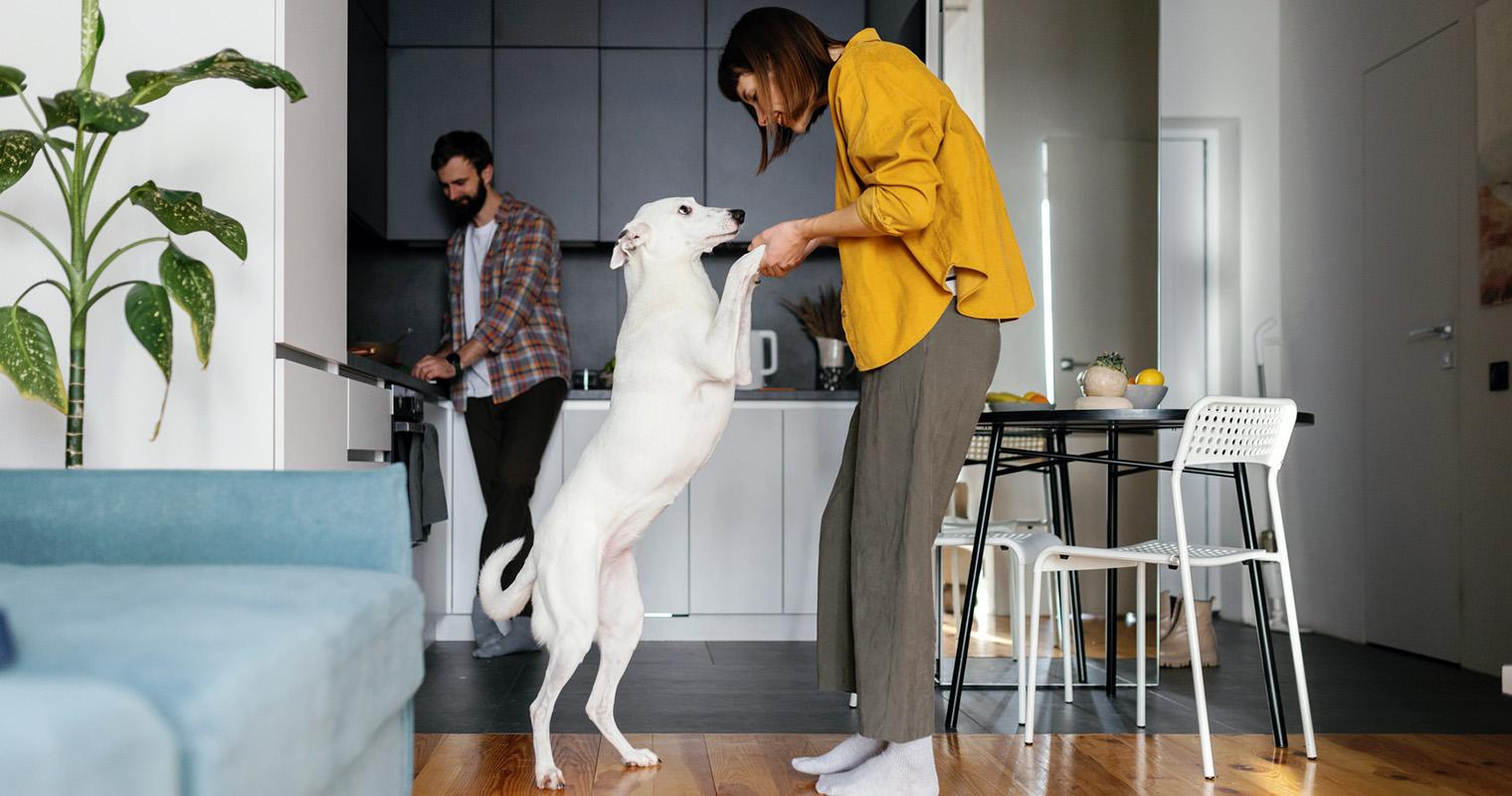
Oleksii Syrotkin / Stocksy
One of the most common new dog adopter questions is how to control your dog’s enthusiastic urge to greet people by jumping on them. While you may enjoy your dog excitedly jumping on you — even inadvertently encouraging the behavior — others do not at all, and actually get uncomfortable or even threatened by this behavior. Turns out taming your love-filled beast without stamping out their joy, is easier than you think. Read on for some transformative tips.
Jumping is a normal, natural behavior for dogs. And there are many reasons they do this. Dogs may jump on people as a greeting to say “hello,” or to investigate and explore what you have in your hands and mouths. They might also jump because they are excited, seek attention, or want to play. Or they may be acting out due to frustration stemming from poor communication and to express isolation distress. Teasing out the underlying reasons why our dog jumps, and then resolving the problem, requires taking a moment to evaluate more than the snapshot of the behavior — and instead consider what happens before and after the action of jumping.
Let’s take a closer look at the reasons why they jump…
Jumping up is a common canine greeting behavior to express their happiness and excitement. They learn from us that this behavior is okay, and repeat it with family members and strangers. It is a way of saying hello.
Just like humans have different ways of welcoming each other (such as waving, shaking hands, and hugging), dogs have their own way of greeting someone they know and showing affection. However, you may unintentionally reinforce this behavior by responding positively to it. Our laughter, smiles, and even baby talk can encourage our dogs to continue jumping up on us. As a result, this behavior becomes reinforced over time.
Dogs have coevolved with us, learning that our pointing gestures have meaning, and that you typically hold items of value and interest in our hands and mouths. From a dog’s perspective, paying attention to our hands and what’s in them is worth their time. How often does food magically appear and then get thrown onto the ground? Dogs approach and even jump on you to investigate what you are holding in your hands, and to smell our breath or what’s in our mouths. Dogs jump up on people, because you have things that are exciting to them, such as food and toys they like to play with.
Dogs tend to jump on people when they become excited. This behavior arises from underlying emotions, such as eagerness, enthusiasm, or even frustration — and leads to arousal. Arousal occurs in all mammals and is a physiological response in which the body prepares for action. This preparation often leads to increased heart rate, respiration rate, and blood flow in muscles, with the objective of movement. For instance, dogs may jump on people running by them, because they are excited to chase them or run with them.
But dogs may also jump out of frustration, because they feel restricted or blocked from doing something at that moment. This may also be due to uncertainty or an inability to communicate with their people. It’s best to stay ahead of these volatile tipping points by negotiating with your dog.
Dogs often jump up on people to communicate their needs, and have learned that this behavior gets noticed. They may lack basic things like food, water, access to the outdoors, or even attention, so they rely on jumping on people to fulfill those needs. When people subsequently takes action, they reinforce the behavior. It’s important to understand why your dog is jumping on people and address any underlying causes contributing to this behavior.
Jumping is a typical behavior exhibited by dogs suffering from separation anxiety or isolation distress, after being left alone for extended periods of time. Such behavior is often driven by fear of their loved ones leaving, or the excitement of seeing them return. Dogs jump to seek attention and communicate their need for safety. They are social animals, just like people, and some dogs have never learned how to feel content when alone. When dogs reunite with their beloved humans after being separated for a while, they tend to jump to release their pent-up energy and show excitement and affection.
Dogs are a social, cooperative species, which is why it’s easy for us to live together. They have evolved to live in large social groups and learn social skills from each other. But living with humans and understanding our rules can confuse dogs, since some of our habits are very different. Dogs establish rules for social play and learn from each other about what is acceptable and what is not. You may observe dogs hip-checking and jumping on each other in their play repertoire. Dogs use the same body language, vocalizations, and behavior to communicate with other dogs as they do with people. Which is why they may also jump up on people to communicate and play. How you respond can shape this behavior.
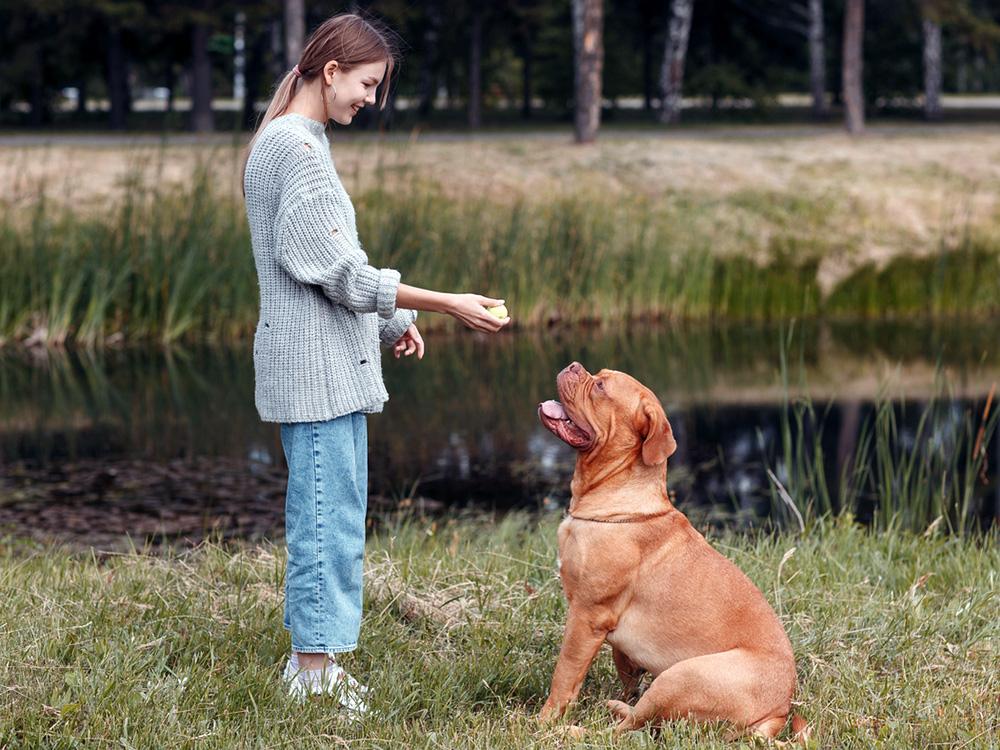
primipil / iStock
To reduce jumping, first try to identify the underlying reason. If you’re at a loss, hire a qualified professional to help rule out more complex emotional reasons, including hyper-attachment or separation anxiety. Regardless, there are some steps you can take to tease out and improve the behavior in the moment.
One practical approach involves assessing the functional relationships between your dog’s behavior and the environmental conditions around them. The term “environment” considers everything in your dog’s surroundings, including you and other people. Start by observing more than the action of jumping. For instance, what happened before the jumping? What happens during the jumping? What happens after the jumping behavior?
Consider the jumping occurrences, both indoors and outdoors, and write down everything associated with the unwanted behavior. Take your dog’s sensory experience into consideration, too: Your dog’s unique ability to smell, hear, and see far exceeds ours. Next, evaluate each individual’s reactions to your dog jumping on them. Write down the scenario and the actions they took. What are you and others doing before your dog jumps? Do you or others open your arms wide, smile, or crouch down? What actions might people be doing to reinforce the behavior?
The study of ethology and animal behavior tells us that dogs’ communication is very subtle. When a dog wants another dog to move away, they turn their head to the side. As discussed earlier, dogs learn from each other, and you can use the same subtle communication signals they learn to convey meanings they are familiar with. Each situation may require a different solution. Here are a few methods to try to stop your dog from jumping on people.
You can turn your head to the side and fold your hands. These gestures communicated through posturing let your dog know that you are closing yourself off to them. In this case, it indicates that you are not paying attention to them or rewarding their behaviors. It is a way to inform your dog to move away or slow down.
Perhaps ask for another cue your dog knows, such as a sit to calm them down, a hand target (a boop with their nose on your hand), or a look, and then allow the dog to approach. Redirecting attention also works by asking them to work on skills and earn food or interrupting their attention with a squeaky toy or chewy reward may help reduce the frustration.
Inside the home, avoid acknowledging the jumping behavior. Reacting to them jumping on people (including you) inadvertently reinforces it. Instead of verbalizing to your dog, “don’t jump,” “down,” “off,” or “no jumping” — and then proceeding to push their paws off your chest or legs — take a deep breath in and breathe out, while turning your head to the right or left. Look away as you proceed to take a step away from your dog.
If your dog continues to jump, take a deep breath without saying anything and walk away toward the kitchen before pouring yourself a cup of water and drinking it slowly. Taking pause allows you to consider the possible reasons for this behavior and respond reasonably to improve it. Calmly removing yourself from the situation encourages your dog to behave better and to make better decisions, such as keeping all four paws on the ground, sitting, lying down, or even taking an interest in something other than you. These are examples of improved behaviors for which you can reward your dog.
When walking outdoors, if your dog loves to jump on people approaching you, proactively call their name to look at you, rewarding them with a treat or a toy. You should also reward them when they look at you on their own, because the more they check in with you, the less they check out. If someone approaches unexpectedly to greet your dog, reach down to first put food on their nose while simultaneously holding your dog’s harness. This action anchors their attention toward you and settles them down, while also teaching your dog that they’ll get a treat if they say hello to people with their feet on the ground.
If you change your behavior first, you can quickly improve dog behavior at any age. There are a few simple techniques that will motivate puppies to learn to keep their four paws on the ground. These simple techniques use positive reinforcement strategies to encourage young dogs to have fun while learning.
Proactively refrain from reinforcing a puppy’s inclination to jump up on you. You can practice by working on some skills as they stand next to you.
Start by portioning out your puppy’s meals, so that you reserve some for a treat pouch.
Observe your puppy’s behavior. Look for reasons to reward your puppy inside and outside the home.
Focus on rewarding non-jumping behaviors. When the puppy has their paws on the ground, say, “Yes! Good puppy,” and toss the food a foot or two away from you on the ground. The puppy may approach, standing with all four paws on the floor, or decide to sit. Either way, let them know they’re being a good dog and give them a treat.
You can initially use a clicker, but be sure to phase it out. A clicker conditions your dog to understand that a unique sound means a treat is coming. We click when the dog does something we like, followed by food. The closer the behavior is to the sound of the clicker (with the treat following), the faster the dog repeats good behaviors. Over time, as you phase out the clicker, use words like “yes” or “good.”
If your puppy jumps up on your leg while you’re standing, turn your head away and fold your arms. If you’ve been teaching your puppy to sit, ask them to sit and wait a few seconds for them to respond. If they don’t respond, turn your head away and take a step or two back. This may make your puppy feel unstable and encourage them to sit or stand on their own. Reinforce good behavior by acknowledging when your puppy has their paws on the ground or is seated instead of jumping up on people.
When you’re outside with your puppy and someone approaches you, be ready to capture the puppy’s attention by holding a very stinky food treat near their nose with one hand, to prevent them from jumping. Use your other hand to hold the leash, with a harness to restrict their movement. This will help your puppy keep all four paws on the ground as the stranger approaches. Eventually, your puppy will learn to stand still with their paws on the ground while receiving treats and attention from people. While some people may express disappointment at not being able to receive puppy kisses, you can take pride in knowing that you’re helping your puppy learn good behavior.
Comparative Kinematic Analysis of Hurdle Clearance Technique in Dogs
Dog Body Language: Dog to English Translation Chart
Dog Obedience Training Lessons
HELP! My Dog’s Jumping on My Guests and on Me!
Impact of Androstenone on Leash Pulling and Jumping Up in Dogs
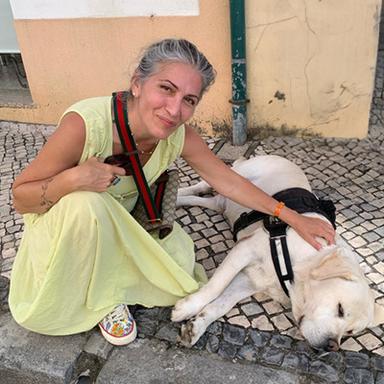
Vivian Zottola, MSc, is an applied anthrozoologist, dog psychologist, member of the Dog Writers Association of America, and research associate with the Center for Canine Behavior Studies, Inc. She runs her own practice in Boston, MA, specializing in the prevention and resolution of behavior challenges between humans and pet companion dogs. She also produces the podcast Click Therapy for Dogs and the People Who Love Them. Find her on Instagram.
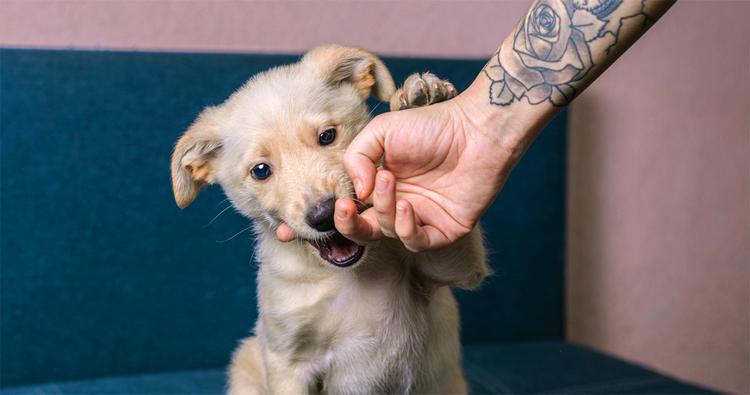
Behavior & Training
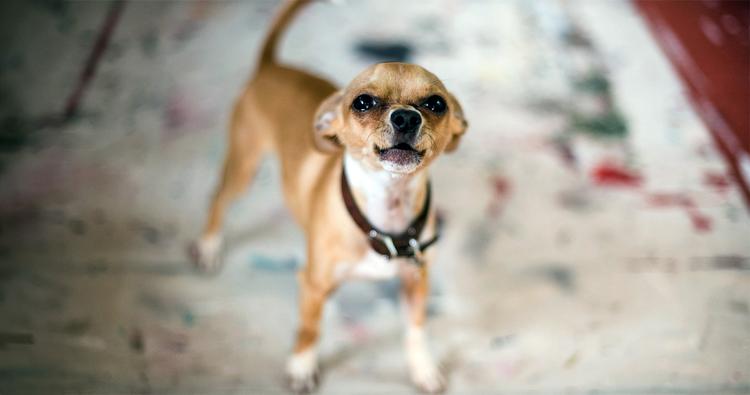
Behavior & Training
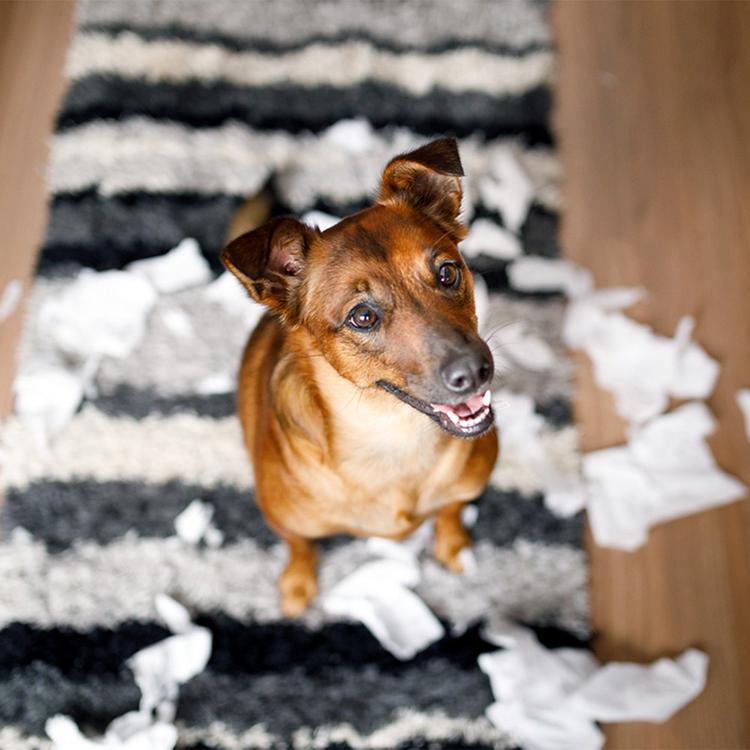
Behavior & Training
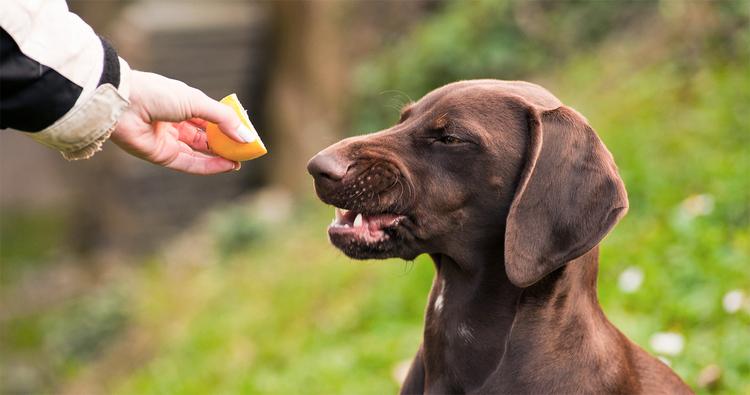
Behavior & Training

Behavior & Training
Behavior & Training
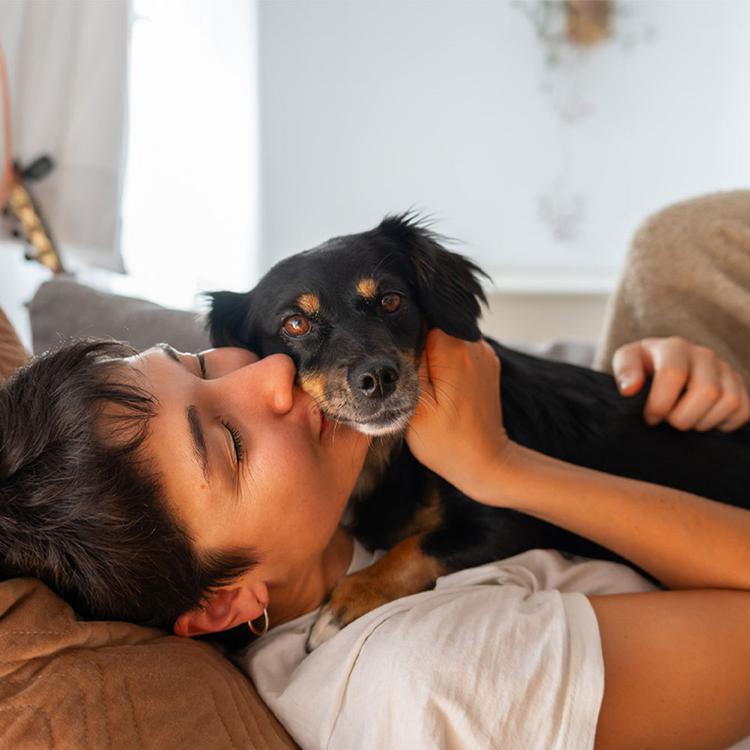
Adoption Advice
Choosing what breed to adopt? Here are the 10 most popular dog breeds.
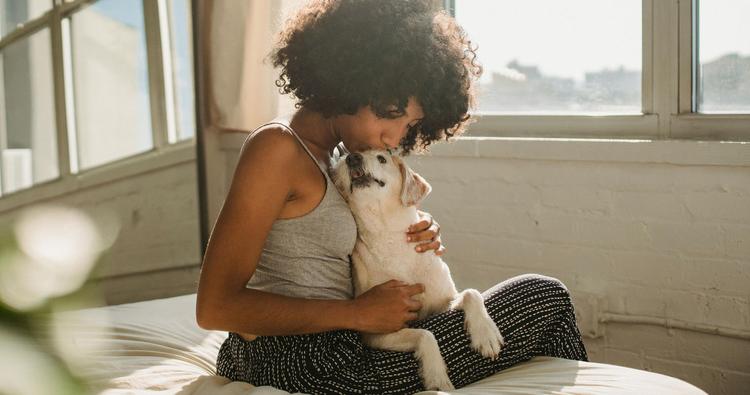
Behavior & Training
Does your dog experience separation anxiety? Explore helpful techniques to comfort and entertain your dogs while they
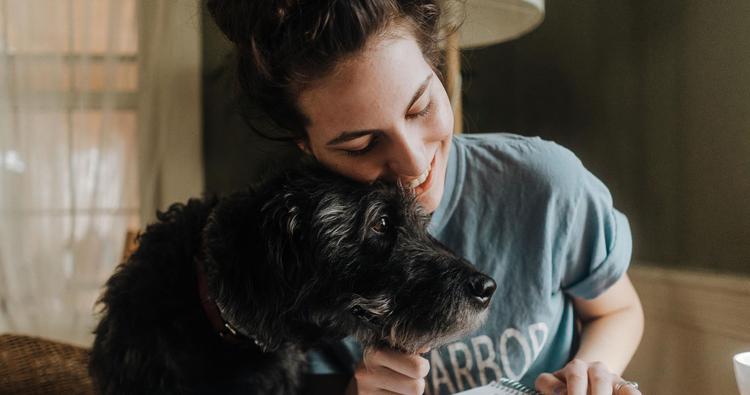
Adoption Advice
Considering adopting a senior dog? Our guide offers valuable tips for welcoming and caring for an older pup.